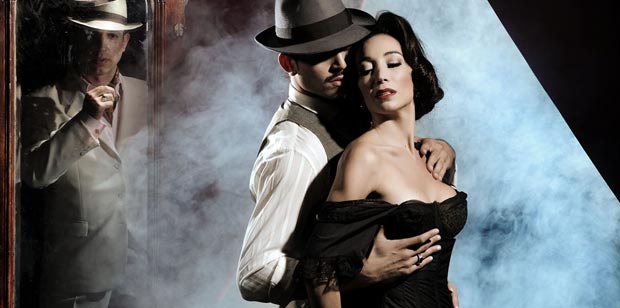
© Federico DeBartolo. (Click image for larger version)
Chantecler Tango
Direction: Mora Godoy, Stephen Rayne
Théâtre du Châtelet, Paris
9 October 2013
www.moragodoy.com
www.chatelet-theatre.com
Partner dances don’t lend themselves easily to stage creations. Their basic premise, the fact that it takes two to tango (or waltz, or salsa), poses a mighty challenge to choreographers: evening-length shows need variety to sustain the attention, and with few technical tools at their disposal to create solos and ensemble work, tango-based productions often struggle to go beyond stock stories and formats.
Many tangueros will shudder at the thought of some shows touted around the world as the “tango experience,” where cultural clichés come thick and fast: the cabaret-like setting, the seedy underworld of Buenos Aires, the prostitutes and above all, the devouring passion between virile, slick-haired men and swooning women with a dangerous edge. The actual tango experience, in milongas around the world, is another beast altogether, both freer and more intimate; I have seen some of the most affecting choreography improvised on crowded dance floors, or in showcases for maestros who tour the world teaching aficionados.
In this context, Chantecler Tango’s assertion that it is “bringing the genre up to date” should be taken with a pinch of salt, but expectations were high for the first tango musical staged in Paris since Tanguera, created in 2002. Both Tanguera and Chantecler are the brainchildren of dancer Mora Godoy, who graduated from the Teatro Colon’s ballet school before turning to tango. She put her stage training to use as a cast member with several tango companies in the 1990s, including Miguel Angel Zotto’s, before creating her own. She doesn’t shy away from publicity to support it: her website boldly claims she is “the most prestigious and popular tango dancer,” and we learn in the programme notes that she once gave private lessons to the Rolling Stones.

© Federico DeBartolo. (Click image for larger version)
Her latest effort, staged with the help of British director Stephen Rayne, brings back to life the Chantecler, the legendary tango cabaret created in 1924 and named after a French play by Edmond Rostand. The plot moves between past and present as the former host, Angel Sánchez Carreño (nicknamed The Cuban Prince), resists efforts to sell the run-down Chantecler and conjures up its golden age. A number of characters are based on actual Chantecler regulars: La Ritana, then the owner’s wife and a femme fatale in Mora Godoy’s interpretation, crosses paths with legendary musician and conductor Juan D’Arienzo, whose recordings are heard in milongas to this day.
The story is told in broad mime. To explain the closing down of Chantecler, Godoy shows us shady backdoor dealings, some involving drugs, and her Ritana seduces a police officer to help cover them up; the other milonga plotline involves D’Arienzo, who is portrayed as a womanizer torn between his wife and his pregnant mistress. An elaborate twist ties past and present together and the upbeat finale, which sees the Chantecler reopen for business, is a departure from reality: the cabaret was torn down in 1960, and nothing remains even of its façade, which was recreated from photographs for the production.

© Marie-Noelle Robert . (Click image for larger version)
The choreography, meanwhile, strives for a blend of tradition and modernity but doesn’t quite pull it off. Too many scenes offer the stage tango we have come to expect: showy, fast, interspersed with gravity-defying lifts lifted from other dance styles. They routinely undermine the connection created between partners through the abrazo, the tango embrace; the closeness it illustrates, the push and pull created as the man leads are among the most fascinating aspects of tango, but Chantecler mostly emulates Godoy’s own style. Her focus is on virtuosic footwork and sharp accents rather than the upper body, and the result is impressive but mostly devoid of emotional resonance.
More rewarding were the efforts of some of her dancers, among them Marcela Vespasiano as D’Arienzo’s mistress, Alma. Some scenes also provide a glimpse of a different tango experience. Early on, as the Cuban Prince (played by Mora’s brother, famed dancer and teacher Horacio Godoy) dreams of times past, dancers assemble around him and dance a low-key, old-fashioned tango, with couples absorbed in each other and seemingly improvising.

© Theatre du Chatelet. (Click image for larger version)
At the other end of the style spectrum, the present time is introduced through smart vignettes of street life danced to modern, electronic tango nuevo composed by Gerardo Gardelin. A corresponding nuevo dance style was developed in the 1990s, and flavours the choreography: usually danced with a looser embrace and a more expansive energy, not to mention crowd-pleasing extensions to match developments in ballet, it’s the style favoured by many young tangueros around the world, and a fine nod to the evolution of tango over the decades. The choreography (credited to Mora and Horacio Godoy, as well as four others) also demonstrates more creativity in these scenes than in the more cautious traditional ones, where dance and gender expectations are never challenged. It’s a shame: if it is to be a choreographic force, tango can and should do more to break new ground on stage. The potential is there.







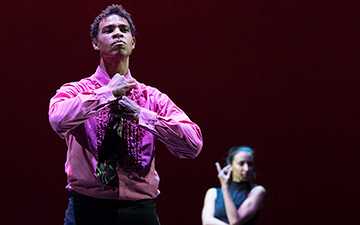

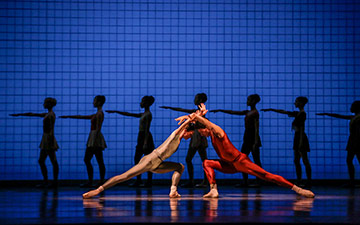
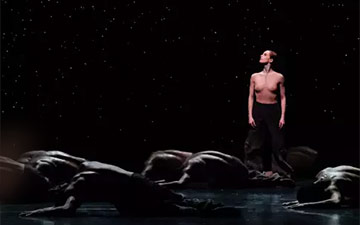

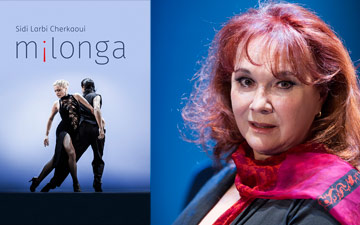



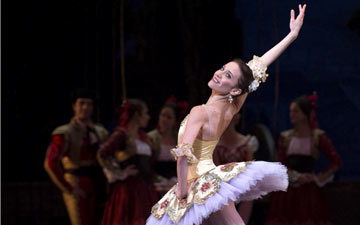
You must be logged in to post a comment.